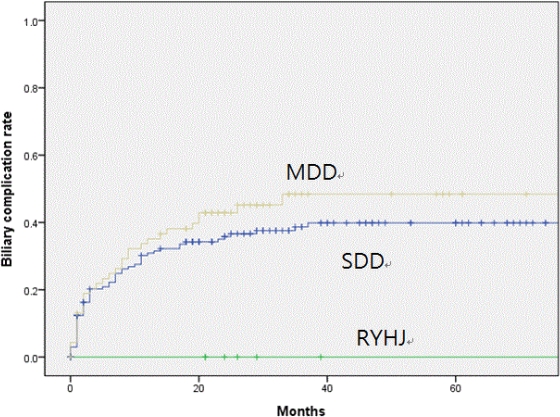Biliary Complication After Living Donor Liver Transplantation According to Biliary Reconstruction Methods
1Department of Surgery, Yonsei University College of Medicine, Seoul, Korea
2The Research Institute for Transplantation, Yonsei University College of Medicine, Seoul, Korea
3Department of Surgery, CHA Bundang Medical Center, CHA University, Bundang, Korea.
Meeting: 2015 American Transplant Congress
Abstract number: B159
Keywords: Bile duct, Liver transplantation
Session Information
Session Name: Poster Session B: Liver: Living Donors
Session Type: Poster Session
Date: Sunday, May 3, 2015
Session Time: 5:30pm-6:30pm
 Presentation Time: 5:30pm-6:30pm
Presentation Time: 5:30pm-6:30pm
Location: Exhibit Hall E
Background
Despite improvement of operative techniques and long term outcomes, biliary complication remains as a severe obstacle in living donor liver transplantation.
Methods
Medical records of 245 adult liver recipients who underwent living donor liver transplantation between September 2005 and December 2013 were retrospectively reviewed. Biliary complications according to the biliary reconstruction methods were analyzed. Biliary reconstruction types were Roux-en-Y hepaticojejunostomy (RYHJ), single duct-to-duct(SDD) anastomosis and multiple duct to duct anastomosis(MDD) including two bile duct to one bile duct, separated two bile duct, made one to one and triples.
Results
Of the 245 recipients, 90 (36.7%) patients had biliary complications including anastomotic bile leakages (n=12), non-anastomotic bile leakages (n=4), anastomotic biliary stricture (n=66), non-anastomotic biliary stricture (n=4). The incidences of anastomotic biliary complications were 0% in RYHJ group, 31% in SDD group and 42.9% in MDD group. (p=0.030). If graft liver containing multiple bile duct orifices, there was no significant difference of biliary complication rate between RYHJ group and MDD group (p=0.503). One patient underwent exploratory laparotomy because of internal herniation in RYHJ group

Conclusion
RYHJ had lower biliary complication rate than duct to duct anastomosis in this study. When the orifice of bile duct was more than 2, however, biliary complication rate of RYHJ was not significantly lower than that of duct to duct(multiple). Time consuming on procedure, non- physiologic passage, source of an ascending infection and internal herniation of RYHJ should be considered.
To cite this abstract in AMA style:
Lee J, Lee J, Han D, Lee J, Ju M, Kim M, Choi G, Choi J, Kim S, Joo D. Biliary Complication After Living Donor Liver Transplantation According to Biliary Reconstruction Methods [abstract]. Am J Transplant. 2015; 15 (suppl 3). https://atcmeetingabstracts.com/abstract/biliary-complication-after-living-donor-liver-transplantation-according-to-biliary-reconstruction-methods/. Accessed December 17, 2025.« Back to 2015 American Transplant Congress
